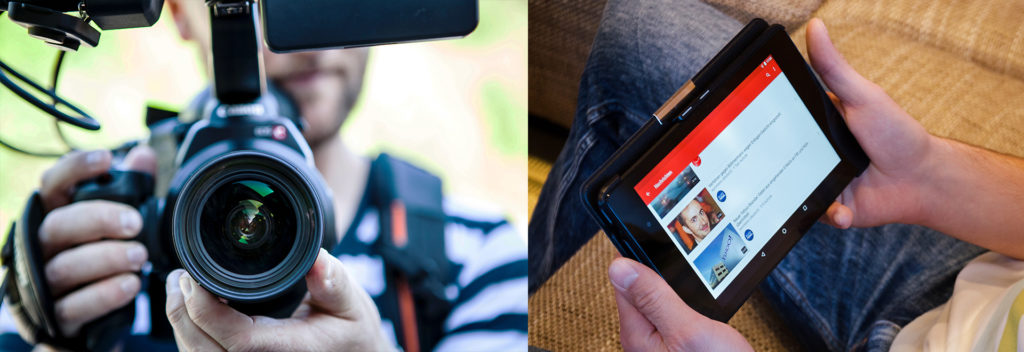Getting Started with Social Media Streaming: What You Need to Know
Broadcast / Digital Mantra / Social Media Marketing on 13th March 2020

Internet users in India has gone up to a number that was previously unprecedented; from 483 million users in the year 2018, India has now crossed half a billion internet users at a whopping 566 million.
Social media streaming has made the leap from novelty to necessity. Channels like Facebook, Instagram, LinkedIn, YouTube and Twitter have integrated live video facility to their platforms as they see traction within this space. And needless to say, an increasing number of brands are tweaking their social strategies accordingly to keep pace with the GEC players.
An estimated 47% of global consumers reported an increase in their live streaming in 2018 from the previous year; these figures are only set to grow. Cisco estimates that 82% of all Internet traffic will be video by 2022.
According to the Forrester report 2018, brands across the globe spent more than $90 billion on video content (much of it went to social media marketing). By 2023, that number is expected to rise to more than $100 billion.
Facebook revolutionised social media when it launched in 2006. Ten years later they launched Facebook Live, giving users the ability to stream live video directly to their Facebook pages.

With more than two billion users worldwide, it’s no surprise that publishers and brands have flocked to the popular platform. According to Facebook, live videos on Facebook experienced six times as many interactions as regular videos on average.
With the click of a button, you can easily live stream while simulcasting to an embedded Vimeo player, Facebook Live, YouTube, and any custom RTMP-enabled social destination such as Periscope.

Facebook Live
Streaming to Facebook Live reaches your viewers where they already are. But like any social media platform, there are limitations that producers will need to consider. Streaming to Facebook Live should be part, but not all, of your live video strategy. Facebook Live has made it easier than ever for their users to go live right away. But for larger organizations, you need a solution that empowers you to own your content and the way it’s distributed. Adding production value to your Facebook Live broadcast is a great way to attract an audience for your announcements or product launches.
YouTube Live
Although it was the first to enter the online video space, YouTube has been playing catch-up with Facebook Live and Twitter’s Periscope. Right now, anyone can live stream to YouTube from their desktop, although live streaming from a mobile device is limited to verified content creators with over 1,000 subscribers.
Instagram Live
Following on the heels of Facebook Live, Instagram rolled out its own live video function in the fourth quarter of 2016. Housed within the app’s popular Instagram Stories section, the feature allows users to engage and interact with followers in real-time with streaming content. A “live” badge will appear on your profile picture to alert followers of your broadcast. Your story will also move to the first spot of the Stories queue at the top of your feed.
Over 500 million people use Instagram daily, and more than 200 million Instagrammers visit at least one business profile daily. Instagram reports an 80% increase in time spent watching video on the app, and a third of the most viewed stories are from businesses. With the right live video strategy, brands can use Instagram Live to help drive engagement with their target audience, and even boost the bottom line.
LinkedIn Live
With more than 645 million members across 200 countries and territories and 30 million businesses represented on the networking site, live streaming on LinkedIn presents a unique opportunity for companies of all sizes to engage professional audiences with high-quality live content.
LinkedIn also prioritizes live events in their feed, making the potential to reach more eyeballs even greater. Currently, LinkedIn requires its members to apply to get access to live streaming, but once you do, sit back and watch your audience grow.
Globally, the online video’s share of Ad spending is expected to grow from 21.2 per cent to 34.3 in 2032, edging out TV’s share. The number of online video viewers is fast approaching the size of the TV audience estimated to be 258 million; India alone has a 195 million of that share.


Sumant Bej
March 13, 2020 at 7:25 pm, ·
Interesting report.
It is really helpful for the beginner who is planning on live streaming.